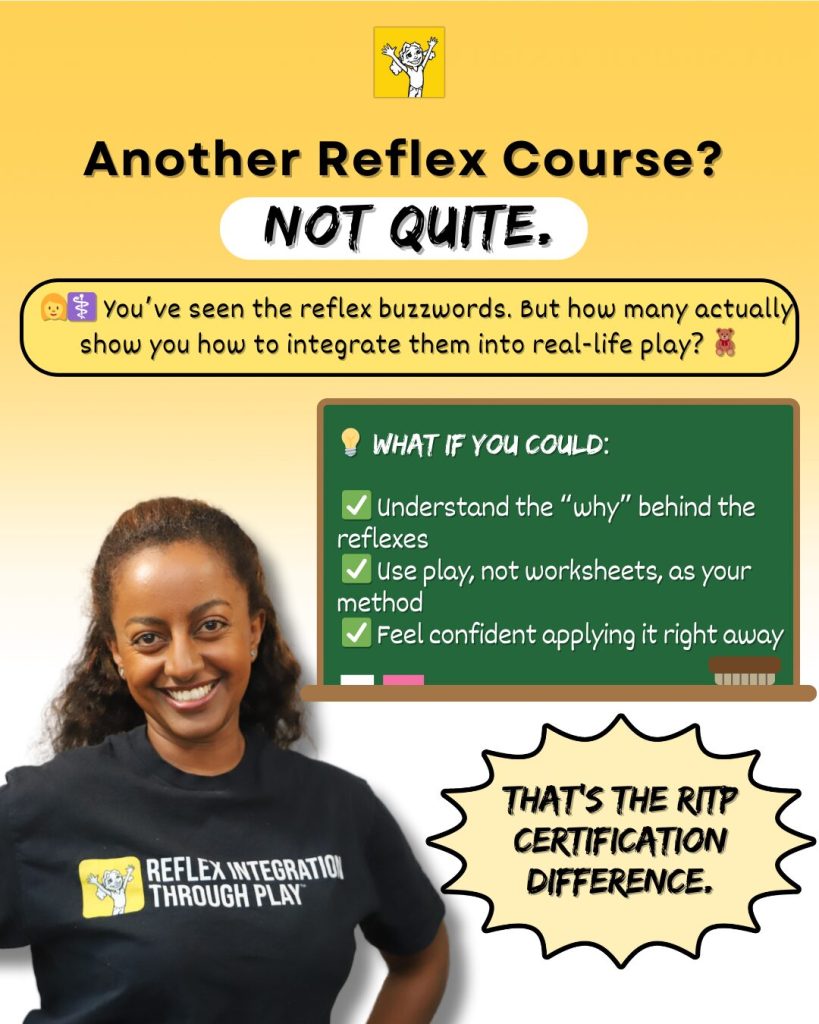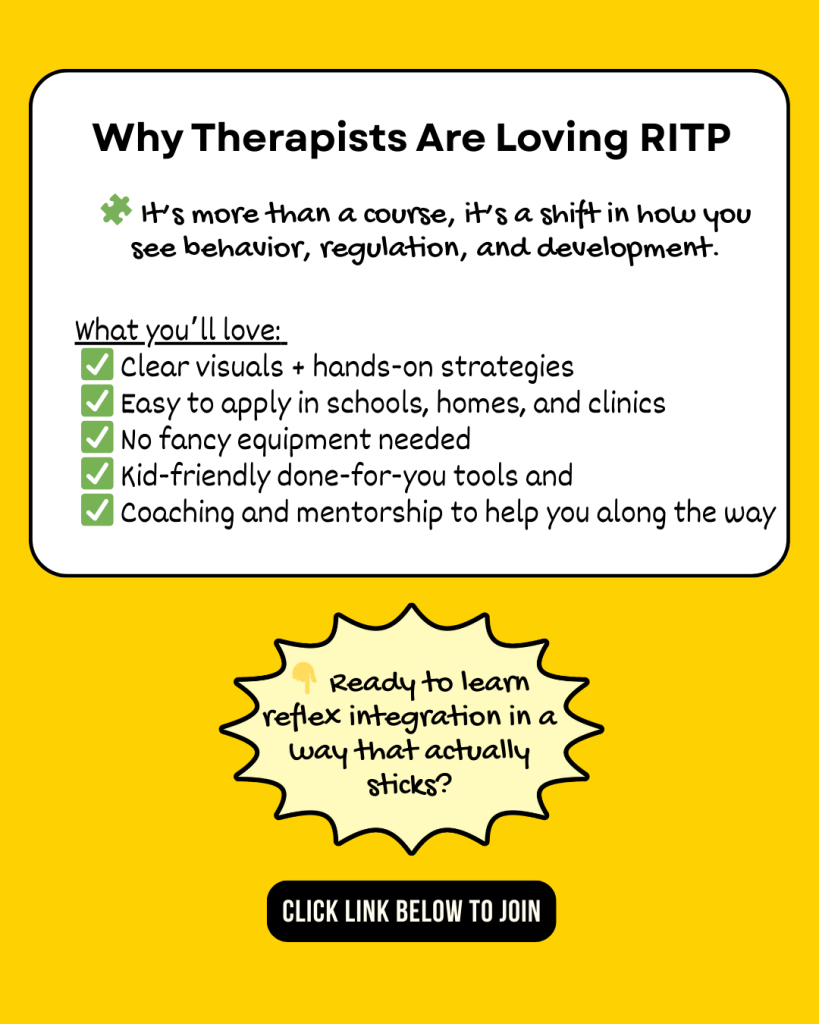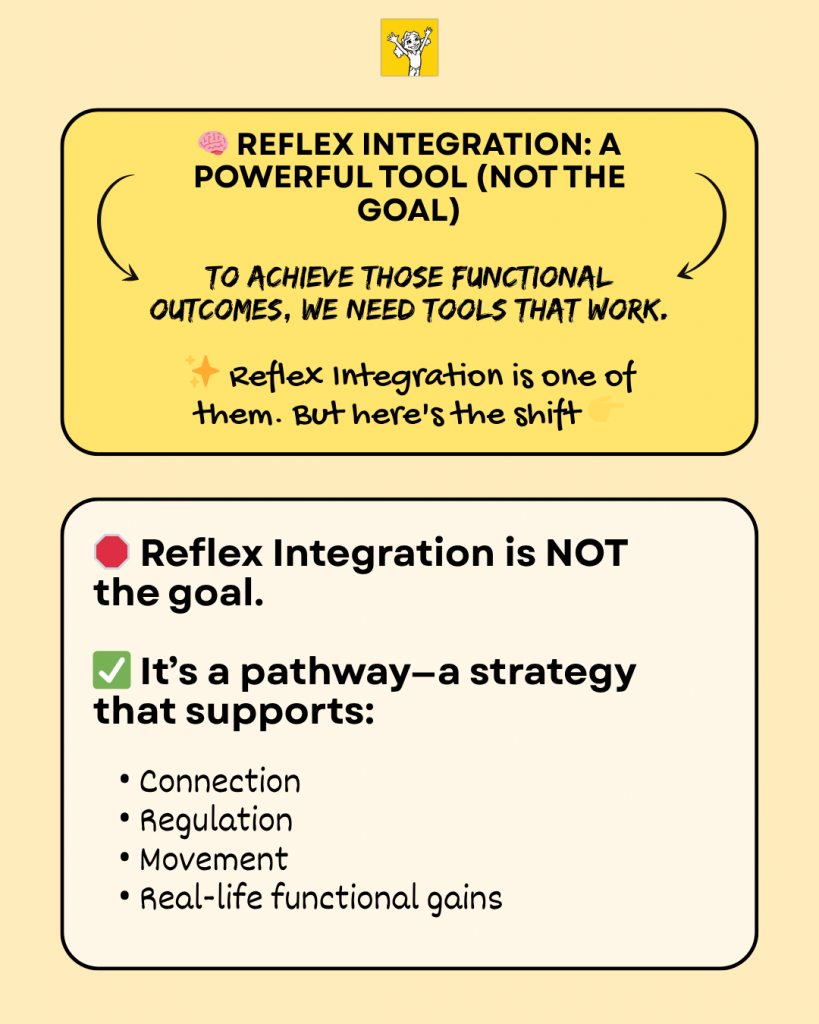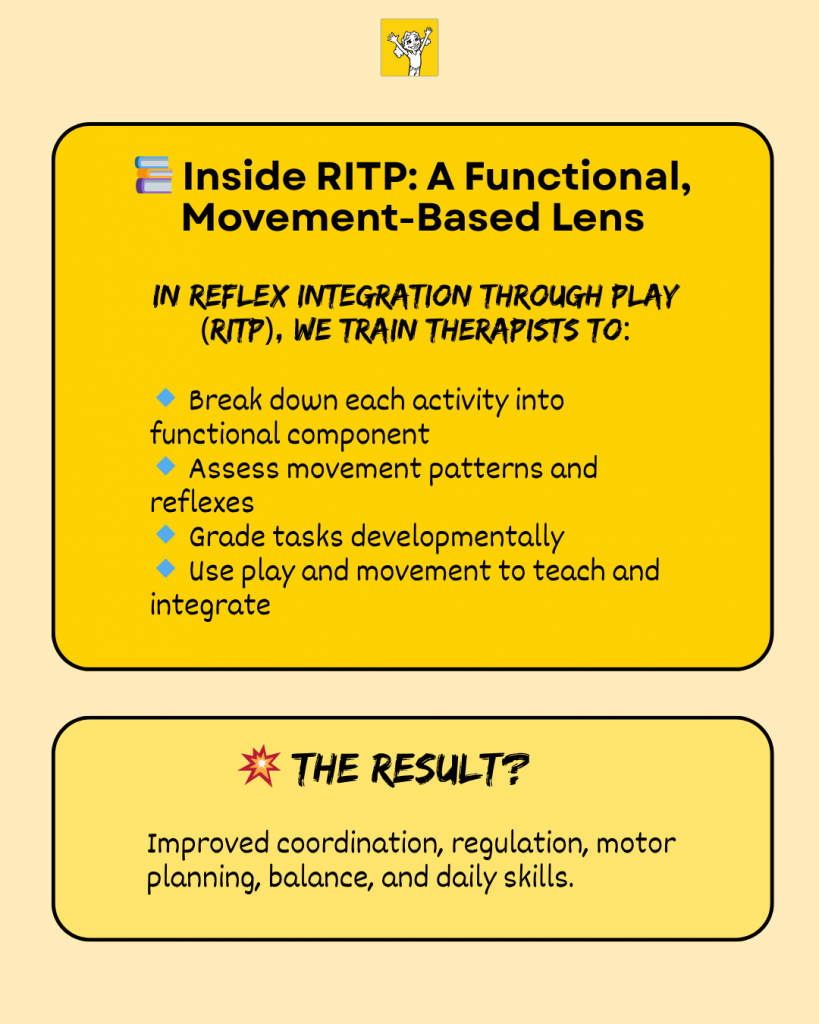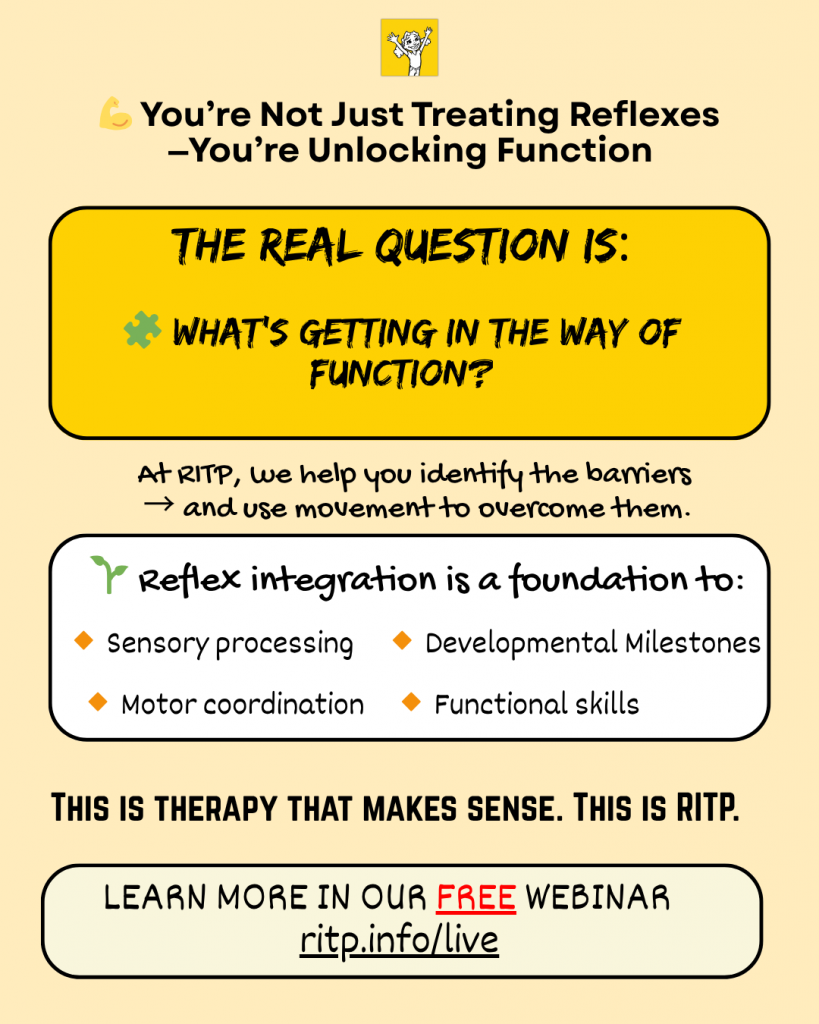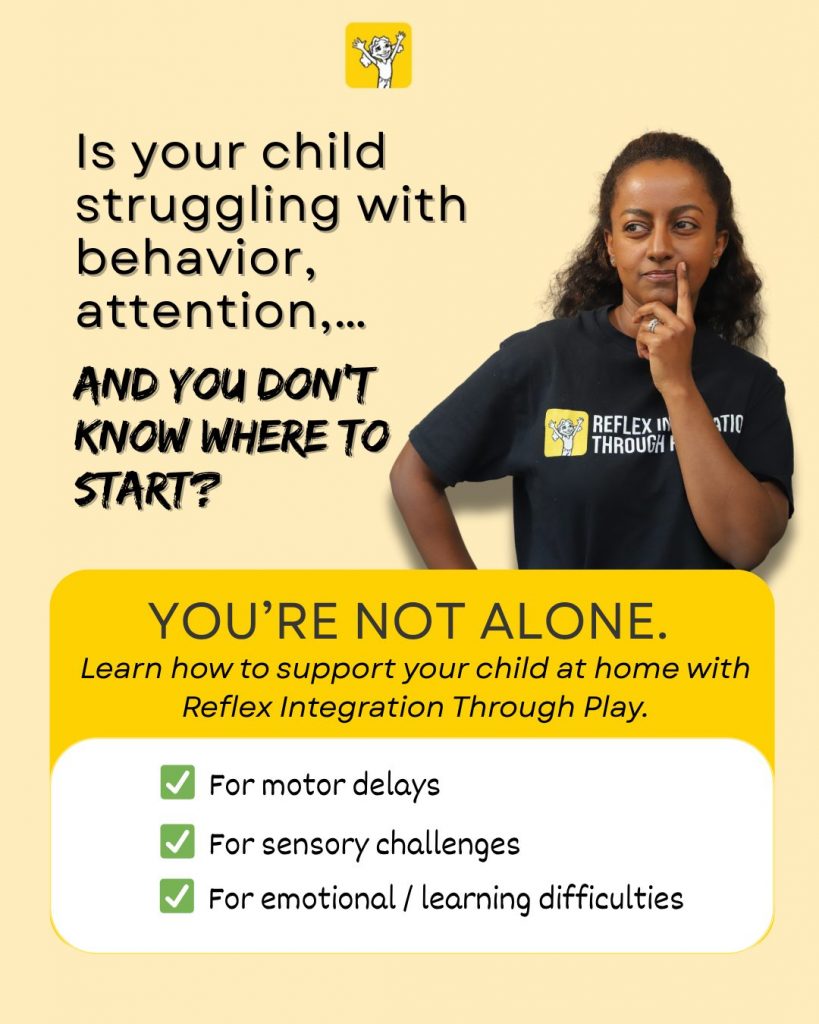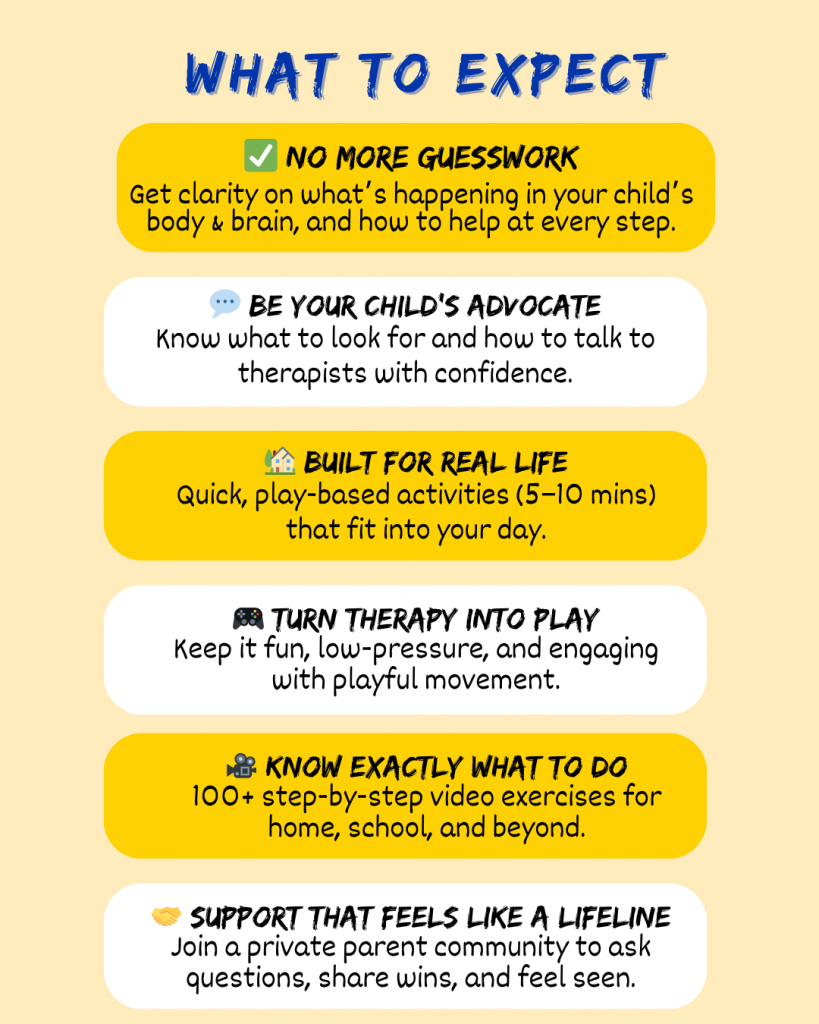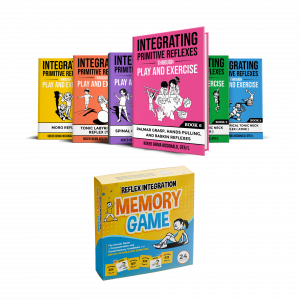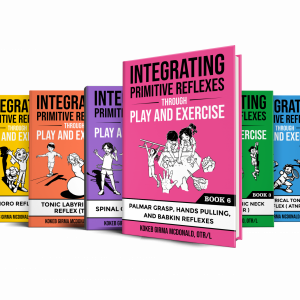Many therapists can identify retained reflex patterns but struggle to address them within treatment sessions. Our work spans functional skills, daily living activities, play, and social skills. However, without a clear bridge between theory and practice, therapy can feel disjointed or ineffective. It’s crucial to connect reflex patterns with functional goals to ensure that the child’s struggles are addressed adequately.
In a recent episode of the Reflex Integration Through Play (RITP) Podcast, Kokeb explores this challenge and shares practical, actionable strategies to make reflex integration a cohesive part of occupational therapy.
From Theory to Practice
Start by connecting specific reflex patterns to a functional skill, daily living activity, or outcome. Identify how each reflex impacts daily tasks. For example, if your client has a retained palmar reflex, this might affect fine motor skills or handwriting. By making these connections explicit, therapists can work effectively with clients and their support systems, including parents, educators, and other professionals, to target the reflex influencing the specific skill.
Practical Strategies to Try
Here are some of the key approaches Kokeb highlights for creating measurable and goal-driven treatment plans:
- Link Reflex Patterns to Functional Skills
Anchor reflex patterns directly to real-world activities like dressing, posture, or handwriting to create clarity and purpose. - Focus on Developmental Progression
Address missed milestones and reinforce foundational skills like crawling before climbing or walking before running. This “back to basics” approach builds stronger brain-body connections. - Use Step-by-Step Exercise Videos
At RITP, structured home and school programs provide visual guidance for therapists, parents, and caregivers, improving the consistency and quality of practice. - Embed Reflex Work into Play
Play is a child’s primary occupation, and integrating reflex exercises into meaningful play makes therapy more engaging and effective. Select exercises purposefully to match functional goals. - Enhance Clinical Observation
Regular observation, especially during unstructured play, can reveal reflex patterns missed in screenings. This allows for more accurate, trackable, and individualized treatment plans.
Key Moments From the Episode
Here’s a quick breakdown if you want to jump around:
[00:00] Introduction to the Podcast
[00:05] Bridging Theory and Practice in OT
[01:45] Linking Reflex Patterns to Functional Goals
[03:00] Developmental Milestones and Reflex Integration
[04:41] Using Step-by-Step Exercise Videos
[06:37] Embedding Reflex Work into Functional Play
[08:23] Practicing Clinical Observation
[10:40] Conclusion and Further Learning
Why This Matters
When reflex integration is woven into functional OT sessions, therapy becomes more purposeful, measurable, and motivating. Rather than isolated exercises, treatment flows naturally, addressing the root cause of challenges while helping children succeed in their everyday lives.
Reflexes aren’t always the problem, but they often hold the key.
When we integrate them, we unlock progress in skills that matter most.
This episode is for therapists, parents, and educators who want practical tools that actually translate into daily success.

